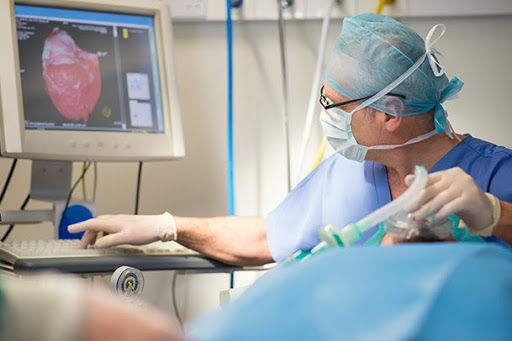Cardiologists
- MedUnite Official
- Mar 12, 2021
- 3 min read
Updated: Mar 14, 2021
Written by: Mihikaa Roy
Edited by: Aleeza and Chantelle

Job Description
A cardiologist is a physician who specializes in diagnosing, treating, and preventing diseases that affect the heart and blood vessels. Some common conditions that cardiologists may assess are arrhythmias, cardiomyopathy, and myocardial infarctions. Before diagnosing the patient, the cardiologist may have to perform a series of tests including EKG’s, x-rays, stress tests, biopsies, and blood tests.
A patient is usually referred to a cardiologist by a primary physician. However, the cardiologist may also need to work with cardiac or cardiothoracic surgeons, cardiac physiologists, specialist nurses, medical secretaries, and administrative staff.
Salary
The average annual salary for a full-time cardiologist in the USA was $351,827 in 2019. This value has been steadily increasing for many years and is predicted to continue to rise. The average annual salary for a full-time cardiologist in Canada is $313,179 as of February 2021.
Subspecialties
There are many different types of cardiologists, each differing in their roles and salaries. The common cardiologist subspecialties are as follows:
Non-invasive Cardiologists - Their role includes examining patients, conducting cardiology consultations, and ordering/interpreting tests. They then decide how to treat the patient and may refer them to a surgeon if necessary.
Interventional Cardiologists - They treat patients with coronary artery disease, heart valve disease, and peripheral vascular disease. Interventions they perform include angioplasty/stent placements, embolic protection, atherectomy procedures, and mitral valve repairs.
Non-interventional Cardiologists - They do the same tests as non-invasive cardiologists, but they can also perform minor surgeries.
Electrophysiology Cardiologists - They place pacemakers, defibrillators, and cardiac resynchronization devices under the skin to sense, pace, and deliver shock. When treating heart rhythm disorders, they may also do ablation procedures.
Workplace
Many cardiologists have an office outside of a hospital, but are connected to a hospital by a contract so that they can help patients when needed. Cardiologists may work more than 60 hours a week and be on-call. This means they are available to work even if they are not officially on duty.
Education
Becoming a cardiologist is a long process that requires dedication and perseverance. The general steps in becoming a cardiologist are:
Bachelor’s Degree (4 years)
Medical School (4 years)
General Internal Medicine Residency (3 years)
Cardiology Fellowship (3 years)
Cardiology Subspecialty Fellowship - optional (1 to 2 years)
Skills/Characteristics
In general, cardiologists require certain skills and characteristics to excel in their career. Some of these abilities include:
Analytical judgement and attention to detail
Making complex decisions in difficult situations
Collaborative skills and the ability to lead a team
Effective communication with colleagues and patients
Dexterity and hand-eye coordination
Work / Life Balance
Typically, a cardiologist will spend most of their time in direct clinical care with inpatients (patients getting treated in the hospital) and outpatients (patients receiving treatment without being admitted to the hospital), as well as complete laboratory work. During this time, they will also participate in team meetings and clinical administration while being on-call. The majority of cardiologists will routinely be on-call on weekends.
The rest of the time, cardiologists will join clinical management meetings, provide advice to colleagues in other specialties, collaborate with community and primary care services, and audit. Furthermore, they may also work on improving services, teaching and assessing junior staff, and continuing their professional development.
How to become more Involved
Cardiology is a difficult specialty to pursue that has different entry pathways based on the country. For students pursuing their undergraduate degree, preparing for the MCAT is essential. The MCAT is one of the major things required to apply to medical school. It is a multi-choice exam with 4 parts that takes about 7.5 hours to complete.
Bibliography
Allarakha, S., MD. (2020, June 24). What does a cardiologist do? (1206867819 899949284 P. Suyog, Ed.). Retrieved February 21, 2021, from https://www.medicinenet.com/what_does_a_cardiologist_do/article.htm
Balan, R. S. (2020, December 2). What are the entry requirements for medical schools in Europe and the U.S.? Retrieved February 21, 2021, from https://www.mastersportal.com/articles/1801/what-are-the-entry-requirements-for-medical-schools-in-europe-and-the-us.html
Cardiologist job description. (2018, April 14). Retrieved February 21, 2021, from https://www.jobhero.com/job-description/examples/medical/cardiologist#:~:text=A%20cardiologist%20diagnoses%20and%20treats,time%20with%20long%2C%20irregular%20hours
Cardiologist Overview. (2020, April 14). Retrieved February 21, 2021, from https://www.careerexplorer.com/careers/cardiologist/overview/
Cardiology. (n.d.). Retrieved February 21, 2021, from https://www.healthcareers.nhs.uk/explore-roles/doctors/roles-doctors/medicine/cardiology
How much does a cardiologist make? (2021, January 25). Retrieved February 21, 2021, from https://www.indeed.com/career-advice/pay-salary/how-much-does-a-cardiologist-make
How much does a Cardiology Physician make in Canada? (2021, February 11). Retrieved February 21, 2021, from https://ca.indeed.com/career/cardiology-physician/salaries
Coronary Angiogram in Iran. (n.d.). Retrieved February 26, 2021, from https://exonmed.co/upload/content/1532583346.jpg




Comments